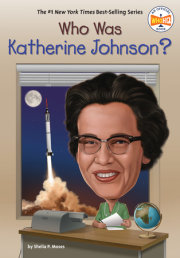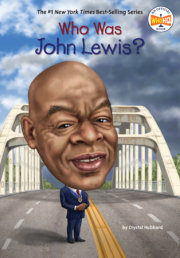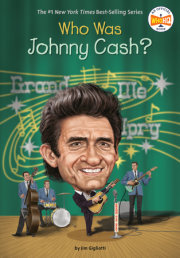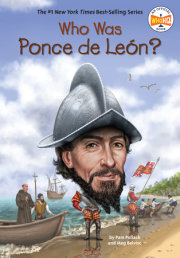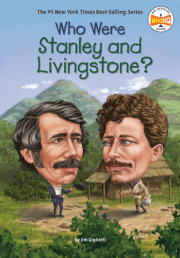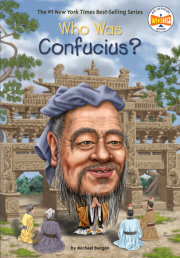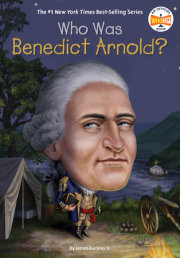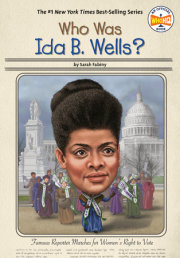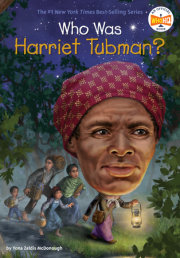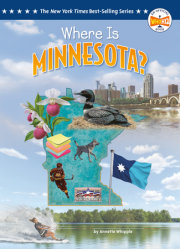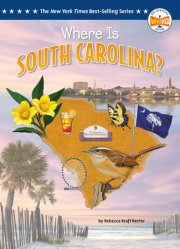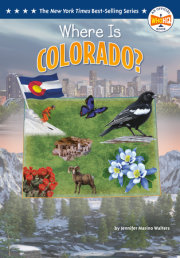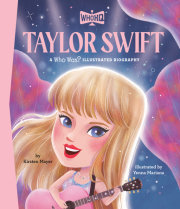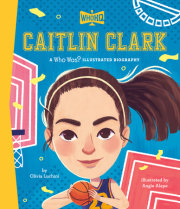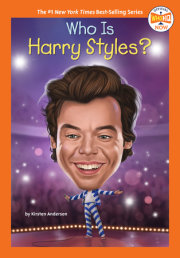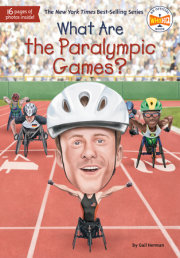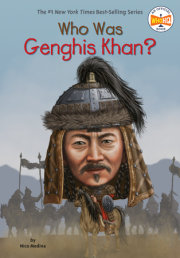Who Is RuPaul? On September 18, 2016, RuPaul made television history. (Or “herstory,” as Ru would say.)
A drag queen—-most commonly, a man who dresses up and performs as a woman—-had never won an Emmy until then. (Emmys are awards for excellence in TV programming, as chosen by the Television Academy.)
Backstage, RuPaul held back tears as he spoke about “all the kids who watch the show.” How it had helped them to “navigate their lives.”
The show he was talking about was RuPaul’s Drag Race. Ru is both the host and judge of the reality--competition show of drag queens from across the United States. The queens all share a passion for performing in drag and compete against one another for a cash prize and the title of America’s Next Drag Superstar.
According to Ru, drag isn’t something unusual to be feared or looked down upon. “Everybody within the sound of my voice is in drag, right now, whether [they] know it or not,” RuPaul has said.
What Ru means is, when anyone puts on clothing, they are getting into some form of costume—-some type of “drag.” When you go to school, you don’t put on your bathing suit. Maybe you put on a uniform. You wear what is expected for a student to wear. People dress in “drag” to go to work. To weddings. Out to dinner.
RuPaul says, “We’re all born naked and the rest is drag.” What Ru means is that we’re all the same—-and life is a performance.
By the time RuPaul’s Drag Race won its first Emmy for Outstanding Reality--Competition Program in 2018, 140 drag queens had competed on the show. Many have gone on to have successful careers and thousands of fans of their own.
“We celebrate people who dance outside the box,” RuPaul said after the win. Their “stories need to be told, and I think there is value in those stories for everyone, not just drag queens.”
RuPaul had traveled a long road to get to that moment. More than thirty--five years before, he had put on his first wig. It had been over twenty--five years since Ru’s song “Supermodel (You Better Work)” had hit the airwaves and made him the world’s most famous drag queen. And it was nine years since Drag Race’s television debut.
But RuPaul had always known he would be famous. Ru has said that to become a star, you need to believe you’re a star—-and eventually, other people will start believing it, too.
As a child in the 1960s, RuPaul hadn’t seen many people like him—-people who were gay, even people who were Black—-on popular TV shows. But things had changed for the better, and Ru had been a part of that change.
“I have always been a creative person,” Ru said. “I’ve always been able to see different colors that other people were ignoring.”
How had RuPaul, who came from very humble beginnings, become such a superstar?
This is his—-and her—-story.
CHAPTER 1: “I Accept My Destiny!” RuPaul’s full name is RuPaul Andre Charles. His mother, Ernestine “Toni” Charles, knew this was an unusual name. Before RuPaul was even born, a fortune--teller had told Toni that her son would be famous. So she named him RuPaul because, she said, “ain’t another . . . with a name like that.”
Toni and RuPaul’s father, Irving, were both from Louisiana. They had met on a blind date. Soon after, they moved to Houston, Texas, and got married. Ru’s older twin sisters, Renae and Renetta, were born in 1953.
Irving Charles had served in the army and fought in the Korean War. After the army, Irving moved the family out west to San Diego, California, where he worked as an electrician. The Charles family moved into a three--bedroom house. Irving built a patio out back.
RuPaul was born on November 17, 1960. His younger sister, Rozy, was born two years later.
Life in the Charles house was not always easy. RuPaul’s parents fought and yelled a lot. When RuPaul was seven, his parents divorced. His mother became so upset that one day, she didn’t get out of bed. That’s when Ru’s older sisters, Renae and Renetta, became the grown--ups in the house. They took care of Ru and Rozy while Toni got the help she needed.
Eventually, Toni got better and found a good, steady job. She worked at a clinic, then later at a local college.
Young RuPaul always knew that he was different from most boys his age. He was quiet and sensitive. He also loved the cigar commercials on television that featured glamorous women, in sparkling evening gowns, performing to Broadway--style music.
When he was four, RuPaul saw something on television that changed his life forever. Diana Ross and the Supremes, a popular musical group at the time, appeared on The Ed Sullivan Show and performed their hit song “Baby Love.” Ru was captivated.
For one thing, seeing three Black women on a program like Ed Sullivan’s was unusual in the early 1960s. And RuPaul saw himself in Diana Ross, the dazzling lead singer, with her perfect hair, beautiful dress, and big, bright smile. He remembers thinking: “That one there, the one in the middle—-that’s me.” He knew then that he wanted to be famous—-the center of attention—-just like Diana.
RuPaul preferred to be around girls rather than boys. He thought that girls and women expressed their emotions and feelings more than boys did. And he liked to play dress--up in their clothes.
“You should have been a girl, and your sister Rozy should have been a boy,” some bullies said to him. The hurtful comments sometimes made RuPaul cry.
Still, RuPaul always did what made him happy: He entertained.
Ru’s mom and sisters were his first audience. “Do your thing,” Toni would tell him, and Ru would stand up, sing, and dance just like the big stars of the day—people like -Tina Turner, Cher, and Elvis Presley.
RuPaul looked up to his mom. He loved her simple yet elegant style. And even though his Toni could be tough, she also had a sweet and sensitive side. She had “the strength of a man and the heart of a woman.”
RuPaul was not afraid to be himself and look different from everybody else. When he was ten, he bleached and braided his hair. At one point, he had a red Afro seventeen inches deep!
Ru attended Alonzo E. Horton Elementary School, just a block from his house, from kindergarten through sixth grade. In seventh grade, he took acting lessons at the local children’s theater. Ru loved it so much, he signed up for drama at his new middle school.
But aside from drama classes, Ru was not the best student. He often got caught staring out the classroom windows, daydreaming.
RuPaul would rather be home, reading his magazines about Hollywood movie stars, New York City celebrities, and Motown musicians like the Supremes. He loved everything about pop culture: the cool fashion, movies, music, and art that was popular at that time.
Ru sometimes tagged along with his older sisters when they visited their friends Aletha and Deborah. Their mom worked as a maid on the other side of town, so the kids would have the house to themselves in the afternoons. They could listen to records—-and sing and dance—as loud as they wanted to!
By the time he entered high school, tall, thin, and freckly RuPaul really stood out from the crowd. With his soft facial features, he was sometimes mistaken for a girl.
In the mornings before class, RuPaul attended Breakfast Club at the cafeteria. Doughnuts, chips, and chocolate milk were served, and the tables and chairs were pushed aside to make room for the students to dance.
RuPaul remembers one morning watching from the sidelines as everyone did a dance called the Bump. Then one day, he and his friend Michelle showed off a move no one at Breakfast Club had seen before. It was called the Crypt Walk, the latest dance craze from Los Angeles. (Ru had seen Olivia Newton--John, one of his favorite singer--actresses, perform it on TV.)
Soon everyone was doing the Crypt Walk! That school year, Ru was voted Best Dancer and Best Afro by his ninth--grade classmates. Thinking back on that day, Ru later said that was his way of saying to the universe, “I accept my destiny!” He was born to entertain.
What did RuPaul do after introducing the Crypt Walk to his classmates? Well . . . he did not go to class. In fact, RuPaul skipped so many classes, he was expelled.
What would he do now? The family decided it was best for Ru to move in with his sister Renetta and her husband, Laurence.
Laurence was a serious young man with dreams of his own. He was a good role model for RuPaul. He’d earned a scholarship to the University of California, -San Diego, and he dreamed big. Laurence loved to drive around La Jolla (say: la HOY--ah), a wealthy neighborhood on the coast, and look at all the big houses. Sometimes he and Renetta brought her family along.
RuPaul liked Laurence. He was the big brother Ru never had. A father figure, even. But just six months after RuPaul moved in with Renetta and Laurence, the couple decided to move two thousand miles away, to Atlanta, Georgia. There were more opportunities there, Laurence said.
Would Ru like to join them?
“Sure,” he said, “why not?”
CHAPTER 2: “RuPaul Is Everything” In the summer of 1976, fifteen--year--old RuPaul arrived in Atlanta. He enrolled at the Northside School of Performing Arts, eager to start acting again.
Ru’s drama teacher, Bill Pannell, taught him and his classmates about method acting—-how to become a character from the inside out. Mr. Pannell was passionate, and even though he expected a lot from his students, he once told RuPaul, “Don’t take life too seriously.”
Ru said this was some of the best advice he had ever received. Whatever problems he might have, life was a gift to be enjoyed. Other people’s problems might be much worse than your own.
One problem RuPaul did not have was getting noticed! The funky new kid from California developed a reputation for his bright, bold outfits. Ru used Renetta’s sewing machine to make his own clothes.
Stripes? Plaid? A cowboy hat? Why not all three?!
Ru still had problems, however, with school. He continued to skip class, and when he did attend, he was often late. After failing his sophomore year, Ru switched schools. But he never graduated.
RuPaul went to work for Laurence, who had started a business buying luxury cars from around the country and selling them in Atlanta. After Laurence made a sale over the phone, RuPaul would fly to wherever the car was and drive it back to Atlanta. Ru said he must have driven across the country more than a hundred times. He listened to the radio and sang the whole time.
In 1978, Ru attended his first drag show in Atlanta at a club called Numbers. Drag shows feature drag queens telling jokes, dancing, and performing popular songs, either by singing them or by lip--synching (say: SINK--ing), mouthing the words to a song but not singing them aloud.
RuPaul remembers seeing a drag queen lip--synch a disco hit called “Bad Girls” by Donna Summer. The performance was so good, Ru thought he was watching the real Donna Summer onstage!
RuPaul was hooked. He went back to as many drag shows as he could.
In 1981, RuPaul saw a local TV program called The American Music Show. It featured a cast of wacky characters with a weird sense of humor that RuPaul could relate to. Ru wrote a letter to the host, Dick Richards, asking if he could come on the show. Lucky for Ru, Dick said yes!
RuPaul says that letter was the true beginning of his career in showbiz.
Before his appearance, RuPaul was helping two girlfriends move into a new apartment. He drove the U--Haul moving truck. Struck by inspiration, Ru told his friends they should start a dance group called RuPaul and the U--Hauls and that they should join him on The American Music Show. And so they did!
In January 1982, RuPaul and the U--Hauls made their Atlanta television debut. RuPaul made all their costumes, and they performed a dance routine to the song “Shotgun” by Junior Walker & the All Stars. RuPaul felt like a star that day.
Ru and the U--Hauls went on to appear regularly on The American Music Show. Dick Richards created a new show called Dancerama USA that featured a segment called “Learn a Dance with RuPaul.”
RuPaul was becoming well--known around the Atlanta music scene. He began performing with other acts. It was at one of these shows that RuPaul dressed in drag for the first time.
A local group called the Now Explosion sometimes acted out a wedding during their performances. At these pretend ceremonies, the boys in the band dressed as bridesmaids, and the girls wore tuxedoes. RuPaul joined them for one of these “weddings.”
“It was the first time I did real drag in a dress, heels, and with hair,” Ru said. He had never even put on a wig before! “The impact it had on people was amazing.”
It made RuPaul feel amazing, too. RuPaul wanted everyone to know just how much of a star he was. So he made posters of himself with phrases like “RuPaul Is Everything” and “RuPaul Is Red Hot.” He put up hundreds of copies all over town.
At this time, RuPaul began performing in drag more often. But besides the Now Explosion “wedding,” he rarely dressed like a woman in the traditional sense. He wore smeared lipstick, messy wigs, ripped T--shirts, and combat boots—-sometimes even tall wading boots like fishermen wore!
“It had nothing to do with being gay” or with “wanting to be a woman,” RuPaul said. It was about challenging how people thought about the world. He wanted people to look at things in a different way when they watched him perform.
RuPaul moved into his own apartment. After RuPaul and the U--Hauls broke up, Ru formed a punk--rock group with two other friends. They performed around Atlanta and up and down the East Coast—-they even played in New York City!
The band broke up in 1984. That year, RuPaul met a local drag queen named Bunny while dancing backup for the Now Explosion. They became fast friends and shopped together at local thrift stores, looking for cheap used clothes to turn into wild outfits.
They didn’t want sparkly evening gowns or “any of that polish,” Bunny said. They were both rock--and--roll queens. “We . . . broke all the rules,” RuPaul said.
Ru continued to host events and put on shows around Atlanta. He sold short books he had written and postcards to anyone who would buy them. Some nights, he sold every copy he had!
Ru, Bunny, and their friends also made campy home movies and sold copies of them around town. (People use the word camp to mean something that is done in an exaggerated, theatrical, and often silly style.)
But RuPaul knew he was destined for bigger things.
He remembered being twelve years old back in San Diego, reading issue after issue of Andy Warhol’s Interview magazine. Ru had learned that to make it big, he would first have to become a downtown New York celebrity.
Copyright © 2021 by Penguin Random House LLC.. All rights reserved. No part of this excerpt may be reproduced or reprinted without permission in writing from the publisher.















